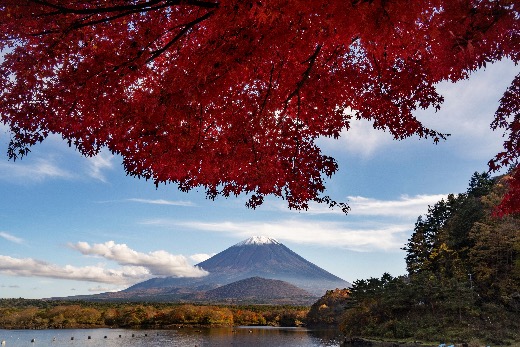# Setsubun in Japan: The Festival of Bean-Throwing and Good Fortune
What is Setsubun?
Setsubun is the day before the beginning of spring, meaning it falls on a different date each year. In 2025, Setsubun is today, February 2!
Japan celebrates Setsubun (節分), and it is a traditional event marking the end of winter and the arrival of spring according to the lunar calendar. While not an official public holiday (red: why not Japan?), Setsubun is widely observed across Japan, blending fun rituals with deep cultural significance. It is believed that performing specific traditions on this day can drive away evil spirits and bring good luck for the year ahead.
The Meaning and History of Setsubun
The word Setsubun means "seasonal division," and in ancient times, it was used to refer to the transition between all four seasons. However, over time, it became specifically associated with the shift from winter to spring. The festival has roots in Chinese customs that were introduced to Japan over 1,000 years ago. The belief is that evil spirits (called "oni") appear during seasonal changes, bringing misfortune and illness. To ward off these spirits, families across Japan perform mamemaki (bean-throwing) and other customs to purify their homes and invite prosperity.

Traditional Setsubun Customs
1. Mamemaki (Bean Throwing)
One of the most well-known traditions of Setsubun is mamemaki, or bean throwing. People throw roasted soybeans (fukumame) either inside or outside their homes while chanting:
"Oni wa soto! Fuku wa uchi!" (Demons out! Good fortune in!)
This ritual is meant to drive away bad luck and welcome happiness. In many families, the head of the household (or a person dressed as an oni) takes on the role of the demon while others pelt them with beans! Temples and shrines also hold large-scale mamemaki events where celebrities and sumo wrestlers participate.
2. Eho-Maki (Lucky Sushi Rolls)
Another important tradition is eating eho-maki (恵方巻き), a long sushi roll eaten in complete silence while facing a specific lucky direction determined by the zodiac for that year. The custom is said to bring prosperity and good health. Unlike typical sushi rolls, eho-maki is not sliced, as cutting it is believed to sever good fortune.
3. Oni Masks and Decorations
Many people wear or display oni (demon) masks during Setsubun, representing the evil spirits they are trying to banish. Some shrines and temples even have fire purification ceremonies to cleanse bad energy and welcome positive change.
How Modern Japan Celebrates Setsubun
While Setsubun remains deeply rooted in tradition, modern Japan has adapted the celebration with new twists:
- Supermarkets sell pre-packaged eho-maki with various fillings, including seafood, beef, and even dessert versions!
- Theme parks and shopping malls hold special Setsubun events, where costumed characters participate in bean-throwing games.
- Social media challenges encourage young people to post videos of themselves throwing beans or eating eho-maki in silence.
Where to Experience Setsubun in Japan
If you're in Japan during Setsubun, here are some of the best places to witness and participate in the celebrations:
- Senso-ji Temple (Tokyo): One of the largest Setsubun events in Japan, featuring sumo wrestlers and celebrities tossing lucky beans.
- Yoshida Shrine (Kyoto): A dramatic Setsubun festival where people in traditional attire perform fire rituals.
- Narayama Temple (Nara): Known for its unique "Oni-oi" (Demon-Chasing) ceremony, where monks perform lively exorcisms.
- Zojo-ji Temple (Tokyo): A family-friendly Setsubun event with cultural performances and interactive activities.
How Interns and Expats in Japan Can Enjoy Setsubun
For interns and expats, Setsubun is a fantastic way to connect with Japanese culture and meet locals. Here’s how you can get involved:
- Join a Setsubun event at a local temple or shrine.
- Visit a Japanese family and participate in a traditional mamemaki ritual.
- Try making eho-maki at home or with coworkers.
- Buy an oni mask and take fun photos to share with friends and family!
Fun Facts About Setsubun
- The number of beans you eat after throwing them should match your age plus one to bring extra luck!
- In some areas, peanuts are thrown instead of soybeans because they are easier to clean up.
- Setsubun was once celebrated four times a year, marking the transition of each season.
- Some Setsubun events feature people dressed as celebrities or anime characters instead of traditional demons!
Want to Experience Japan Beyond Setsubun? Join an Internship in Japan!
If Setsubun sounds exciting, imagine living and working in Japan while experiencing its unique traditions year-round! At Zentern Internships, we help students and young professionals from around the world find life-changing internship opportunities in Japan. Whether you're passionate about business, technology, marketing, or hospitality, an internship in Japan can boost your career and immerse you in one of the world’s most fascinating cultures.
Start your adventure today! Apply now and make Japan your next career destination. 🌸🎌






